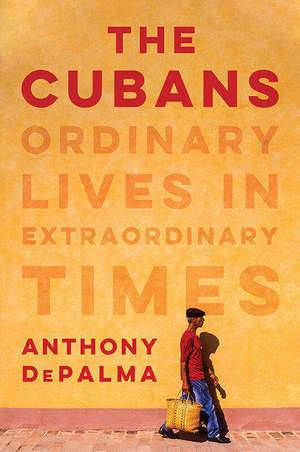What I’m Reading: The Cubans, Anthony DePalma | Notre Dame Magazine | University of Notre Dame – ND Newswire
Nearly 20 years ago I had the good fortune to accompany the first Notre Dame student group to visit Cuba since Fidel Castro took control of the country in 1959. Back then it was virtually impossible — it is still extremely difficult — for average Americans to travel legally to the island. Educational groups, however, could receive an exemption. My key to the Forbidden Kingdom was a field trip to explore Cuba’s classical architecture heritage.
It was an amazing trip. We felt as if we were exploring the dark side of the moon, even if it was a carefully curated dark side. Under the watchful eye of our charming government guide we spent a week meeting with city planners and Cuban architects and touring the architectural gems of Old Havana and Trinidad, a small colonial town on the south side of the island, not far from the infamous Bay of Pigs.

We also sampled Havana’s tourist delights, from sipping mojitos on the veranda of the exquisite Hotel Nacional to visiting the fabled H. Upmann cigar factory. In short, we were treated to a wonderful, glossy, postcard image of Cuba. With one notable exception.
Returning from our day trip to Trinidad, we detoured down the narrow side streets of Guanabacoa, the gritty Havana neighborhood that’s a five-minute ferry ride across the harbor but light years from the restored beauty of Old Havana. I remember it as pitch black with no one on the streets. There were no street lights — in fact, no lights at all due to a power outage. The real dark side of the moon, where real Cubans live and work, was here, I knew, in this black maze. This is the Cuba that tourists never see. Anthony DePalma illuminates it very well in his new book, The Cubans: Ordinary Lives in Extraordinary Times.
A former foreign correspondent for The New York Times and frequent contributor to Notre Dame Magazine, DePalma tells the story of Cuba since the revolution through the eyes of several residents of Guanabacoa. Anchoring the book in the neighborhood where his wife grew up, he finds a cast of characters willing to share their day-to-day lives, stories, dreams and perspectives.
The cast includes a world-renowned Cuban artist who fled to Mexico only to return because he missed the inspiration of the Cuban sunlight; a refugee living in Miami who for 25 years has sought justice for 14 family members who drowned when the Cuban government sank their boat as they tried to leave the country; a former high-ranking Communist Party official turned entrepreneur. Their intertwined stories confirm what you might expect: Change has come slowly to Cuba, and life has not been easy.
DePalma identifies four phases Cubans have experienced since the revolution — realization, reckoning, reconsideration and reconciliation. The narrative moves from the early hopes for a worker’s paradise through the shortages that began in 1994 after the Soviet bloc disintegrated and ends with a reconciliation of Cuban identity into a tentative flirtation with capitalism. Along the way, the journey is flavored with luchando, the distinctly Cuban improvisational hustle that, despite shortages, always finds a way to get by.
Arguably the heart and soul of the book is Caridad Limonta, the Communist official turned entrepreneur who epitomizes the four-part transition that all of DePalma’s characters undergo. The Afro-Cuban woman grew up in poverty in a small sugar-plantation town. Identified early on as someone with potential, she earned a college degree in the Soviet Union and rose to become a plant manager and eventually Cuba’s vice minister of light industry.
By the book’s end, Limonta has grown disillusioned and uncomfortable with her privilege. She leaves the party, starts a small textile sewing business and bids farewell to her son, who — with her blessing — emigrates to Jamaica in search of better opportunities.
For Limonta, like many Cubans, the revolution has become irrelevant. The shortages have never gone away. Her watchword today is cubanidad, the brash, confident essence of being Cuban that transcends politics. She loves her nation more than ever and is determined to make her business succeed. DePalma’s characters all move on from the revolution in their own way.
The Cubans is an amazing feat of granular reporting. DePalma traveled the country for three years researching the details of his narrative. The result is a three-dimensional snapshot of life in Cuba today. As the noted Cuban-American poet Richard Blanco has said of the book, “It allows you to feel Cuba today, not just understand it.”
To that, I raise my mojito and would puff my H. Upmann cigar — if I had one.
John Monczunski is a former associate editor of this magazine.